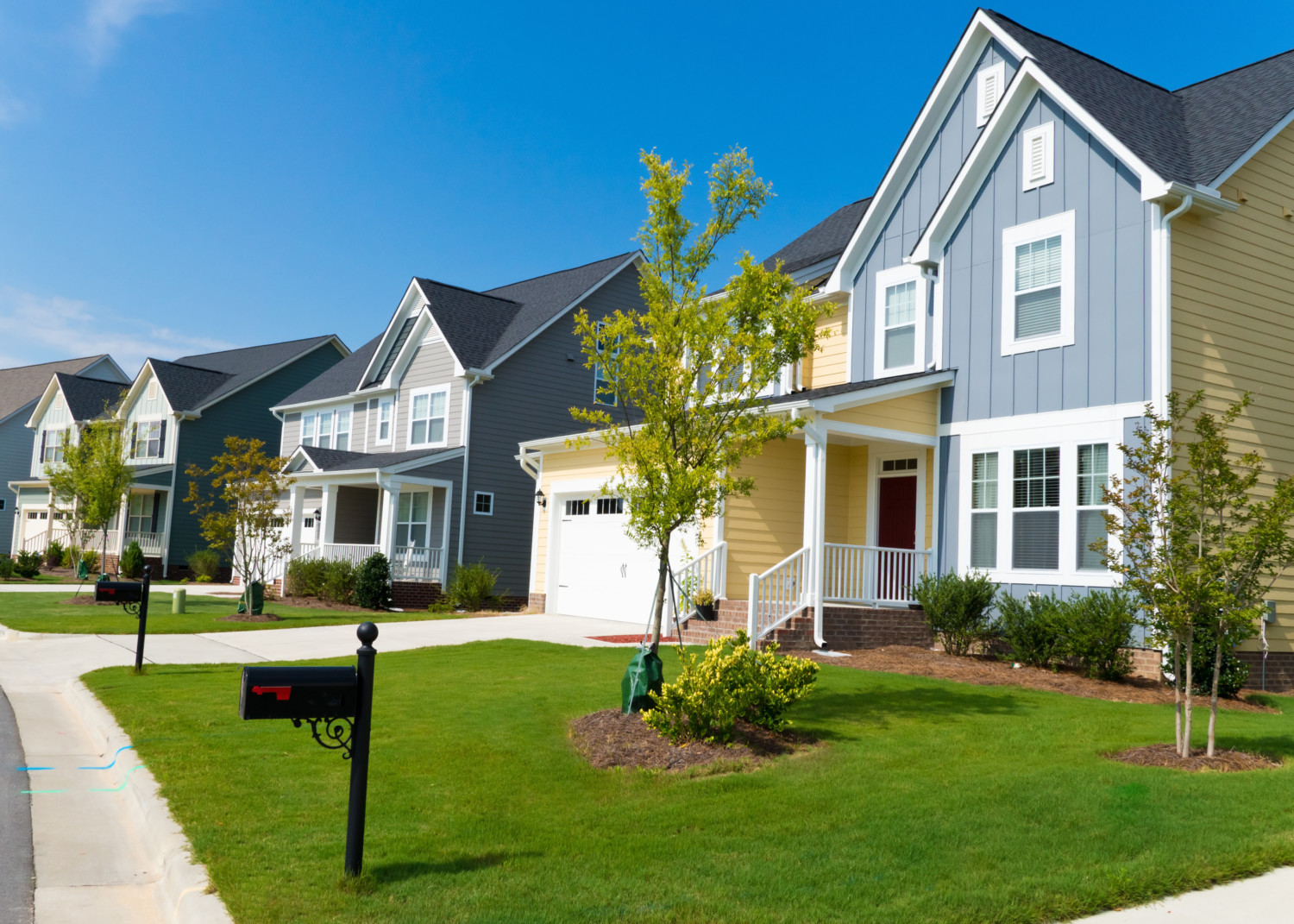When Jesse Janelle, 33, and her husband were house hunting, they were looking specifically for homes that had enough room for their growing family as well as her parents. They purchased a three-story, 4,500-square-foot home in Rowley, Massachusetts, and it has a basement-level apartment with its own entrance.
The living situation is a multigenerational win-win: Janelle’s parents helped by providing the downpayment for the home and she and her husband assumed all of the monthly expenses and the mortgage thereafter. Now, her retired parents are living expense-free. They also help provide childcare for the couple’s young kids while Janelle and her husband work from home. Beyond the practicalities, there are little moments, too, that just make life sweeter, like when the kids garden with their grandma, the nights Janelle makes big family dinners or when Janelle and her husband slip out for ice cream dates after they put the kids to bed.
“My dad says this is the best part of his life because he gets to see his grandkids every day,” says Janelle, a mom of three and a coach and speaker who works largely with millennials.

More Families Are Living Together In Multigenerational Households
Multigenerational living is a fast-growing trend in the United States: A quarter of U.S. adults ages 25 to 34 resided in a multigenerational family household in 2021, which is up from 9% in 1971, according to the Pew Research Center.
Since the Great Recession in 2008, there’s been much attention focused on the rising share of young adults who boomerang back home and live with one or both of their parents. While this may be the most common arrangement for young adults in multigenerational households, realtors are also seeing many situations like Janelle’s: Families are strategically seeking out homes big enough to live together and also renovating existing spaces so they can move in with one another and share household responsibilities and costs.
Ahead, see how today’s high-priced housing landscape, loosened restrictions on accessory dwelling units and other factors are reshaping American households — plus tips on how to live in multigenerational harmony.

Why Multigenerational Living Is On The Rise
Most members of the Gen Z and millennial generations want to own a home someday, but their biggest challenge is affordability, according to a Bankrate survey from March 2022 that was conducted by the research firm YouGov.
In fact, buying a home is considered by those surveyed as a hallmark of the “American dream,” with 74% of those surveyed placing the highest priority on homeownership, above being able to retire, having a successful career, owning a car, having children or getting a college degree.
Yet today’s first-time buyers face a whole lot of hurdles that can make it difficult to both save and qualify for a home. The cost of higher education rose sharply when millennials were in college, saddling many with student loan debt that can impact debt-to-income ratios which, along with credit scores, are necessary to qualify for home loans. Wages, however, have remained stagnant for decades, making it harder to pay those loans off — and the prices of everything seem to be going up, for various reasons.

On top of that, home prices have been on the rise, with the national median single-family home price reaching $398,500 in Nov. 2022, which is 8.6% higher than a year ago, according to the National Association of Realtors. Then, factor in escalating mortgage rates. Rates on 30-year, fixed-rate mortgages, the most popular loan type, are at 6.36%, and had crept above 7% in fall 2022.
Megan Micco, a realtor in Berkeley, California, says she works frequently with millennial buyers — many of whom have careers with successful tech companies — who still struggle to find affordable homes in today’s expensive home market. These circumstances, she says, have led to an increase in multigenerational living.
Young professionals often need financial help from parents in order to qualify for and afford a home purchase, Micco says. In addition, many millennials are also new parents who are looking for caregiving support for young children; high childcare costs can put further pressure on household budgets. Simultaneously, many retirees are looking to affordably downsize, lower their living expenses and spend more time with their children and grandchildren.
“The benefits of multigenerational living include shared housing costs, built-in childcare, closer family relations, and elder home care,” Micco says. “Aside from the possibly challenging intra-family dynamics of living close together, these arrangements have an undeniable financial benefit for all members of the group.”

Adapting Homes For Multigenerational Living
Accessory dwelling units — which go by lots of monikers like ADUs, granny flats, in-law units, or backyard cottages — are growing at a rate of 9% per year and can cause home values to swell by as much as 35%, according to home services platform Porch.com.
The growth in ADUs is helping make multigenerational living more of a reality, too, for many families. Many cities, Micco points out, have passed local ordinances in the past few years to relax the permitting requirements for building ADUs in an effort to relieve pressure on the housing crunch. But, these types of structures are also ideal for coexisting, as ADUs are generally stand-alone structures on the same lot as the primary residence, often with their own kitchens and laundry units.
As multi-generation households become more commonplace, builders and remodelers are taking notice, too, says Jennifer Spinelli, a real estate investor and founder of Niche Home Buying in Albuquerque, New Mexico. New home features, she says, include separate entrances and living quarters, larger common spaces, and other features like wheelchair ramps and wider doorways to accommodate all members of the household.
“Many builders and remodelers are also incorporating technology into their designs to make the home more efficient and connected, from voice-controlled lights to smart thermostats,” Spinelli says.

Tips For Making Multigenerational Living Work
Considering living with your parents, but not sure how that will work out because the last time you were under the same roof you had a curfew and chore chart?
It’s all about managing expectations and respecting one another’s space, says Janelle, who has grown to love her multigenerational household arrangement so much that her family is looking into options that would also allow her husband’s parents to live with them as well.
Her advice to others considering living under the same roof as their parents is to “make sure everyone in the house has their own separate spaces — otherwise, it can feel crowded.”
Her parents have their own entrance to their basement apartment and she and her husband have their own home offices to retreat into.
She also says it’s important to set expectations when you move in together — is it OK to drop by one another’s part of the home unannounced, or is it best to knock or text first? Will you share meals and groceries? How will shared household expenses and repairs be broken down?

Another thing to consider if you’re planning to buy a home that your parents will live in: There are several programs for first-time home buyers, so millennials should carefully consider the role their parents will play financially when shopping for home financing, says Micco.
It may make sense to take a loan from a parent for a down payment rather than having the parent co-sign on the mortgage, she says. Check in with a local lender or mortgage broker to understand the available options.
This story originally appeared on Simplemost. Check out Simplemost for additional stories.


